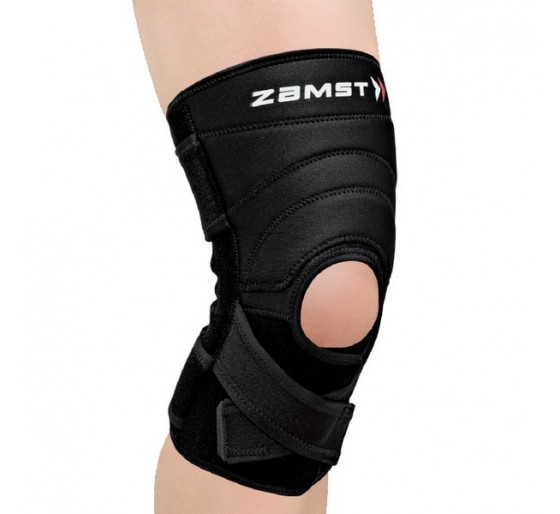







LCM and LCL collateral ligaments and ACL and ACL cruciate ligaments, patella syndromes, massive stability, injury recovery

SECURE PAYMENTS

FREE SHIPPING FOR ORDERS OVER €25

FREE RETURNS FOR THE FIRST 30 DAYS
Knee brace for complete knee protection, massive anterior, posterior, lateral and medial stability, injury recovery
The ZK-7 is the most complete support for stabilising the knee ligaments. It is ideal for athletes and sportsmen who have suffered ligament injuries or injuries (from severe to severe) or who want to preserve the ligamentous apparatus from new injuries. It is characterised by the presence of dynamic progressive resin splints, which allow very fluid flexion/extension movements; the crossed and parallel Velcro straps ensure effective compression and total stability of the joint.
Product pluses:
- Exo-Tech exoskeleton with four-directional hold: ACL (anterior cruciate ligament), LCL (lateral collateral ligament), LCM (medial collateral ligament) and LCP (posterior cruciate ligament);
- Exo-Grid lateral reinforcements made of dynamic progressive resin, perfectly stabilise the joint by offering progressively more support depending on the degree of bending;
- Structure with semi-open design that favours supportive support and superior fit, and helps prevent slipping even under intensive competitive use;
- The two-part closure creates a superior fit around the kneecap with the ability to easily adjust the degree of compression;
- The elastic, breathable material with V-Tech technology wicks sweat away and facilitates flexion and extension movements;
- Criss-cross system tears provide effective compression and high joint stability;
TYPE OF INJURY: Various degrees of injury to the ligamentous apparatus, recovery from ruptured ligaments, patellar syndromes. Knee sprains occur when the ligaments supporting the knee are overstretched (stretched), or torn (partially or totally) due to internal or external factors. ACL injuries are usually the result of lateral trauma (common in 'contact' sports such as football, basketball, rugby) or valgus stress (falling on skis with spread legs), but if it is the ACL that is damaged, the tibia follows the thrust and does not resist. Injuries to the ACL often follow a twisting of the knee (falls in rotation as in basketball, volleyball, skiing) or a forced maximum flexion or extension, finally, injuries to the LCL almost always occur in the case of direct anterior trauma with a flexed knee (frontal collision) and there is a perceived looseness in the patella.
SYMPTOMS AND SIGNS: There are 3 degrees of injury with increasing severity: I) It is a mild stretch of the ligament fibres with the presence of pain and swelling in the knee, medial or lateral but without clinical signs of instability. II) The ligament is partially torn, with live pain, swelling and associated lateral or medial knee instability. III) The ligament is almost completely torn, with the knee presenting severe instability, excessive swelling and often an associated meniscal injury.
TREATMENT OF THE INJURIES: Always consult the Specialist, indicatively a torn anterior (or posterior) cruciate ligament is NOT able to heal adequately so central injuries require surgical treatment. Peripheral injuries (medial and lateral collateral ligaments) are ligamentous injuries that rarely require surgical repair because they heal completely: the product was conceived for this purpose from the physiotherapy experience of Nippon Sigma Group Ltd. WARNING: Always consult your doctor for an objective examination and to make the correct diagnosis.
Composition: Polyester, Nylon, Elastane, Chloroprene, Polystyrene, Polyurethane, Acrylic